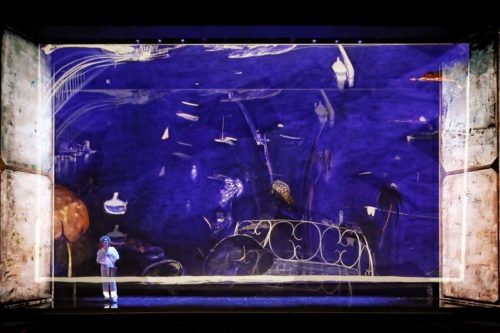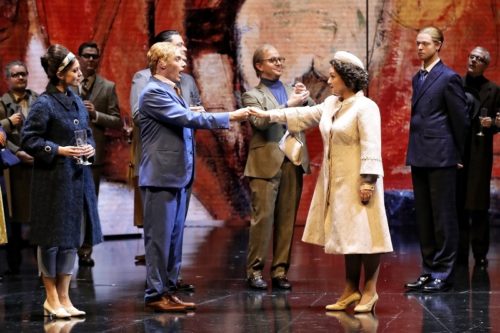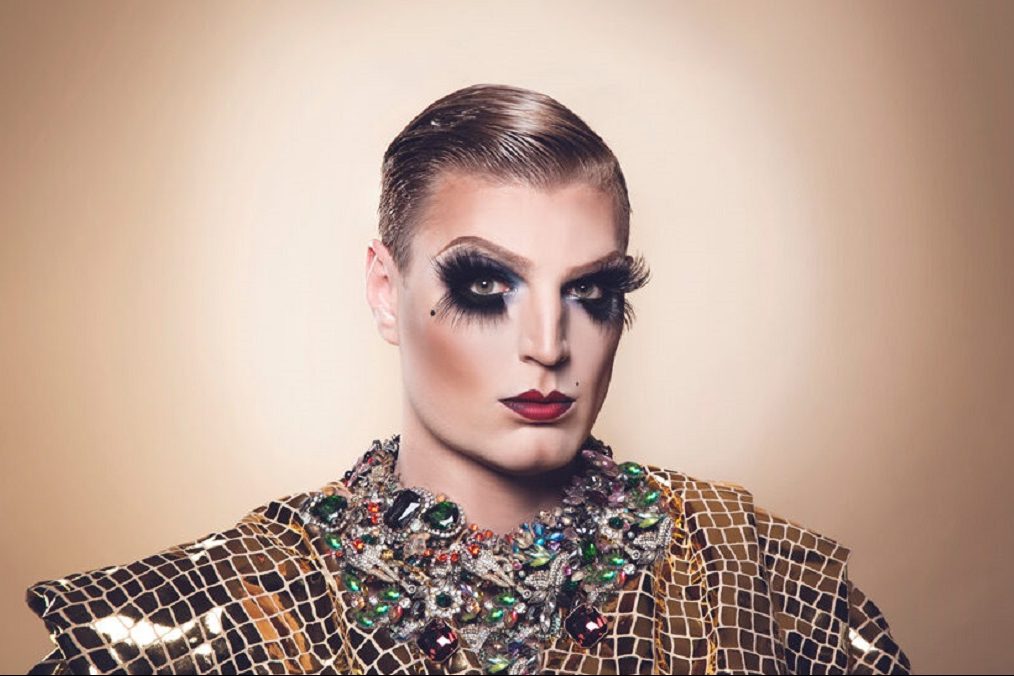
Opera / “Whiteley”, Opera Australia at Sydney Opera House until July 30. Reviewed by HELEN MUSA.
THERE is a certain magnificence to Opera Australia’s newly commissioned production of “Whiteley”, drawing to a close in an all-too-short season at the Sydney Opera House.
This is the second Whiteley-themed production for the year, following Theatre of image’s production, “Brett and Wendy” at Sydney Festival, directed by Kim Carpenter, himself a visual artist and more closely attuned to the driving motives of Whiteley.
Commissioned by Opera Australia’s Lyndon Terracini, Elena Kats-Chernin’s new work, by contrast, falls into a line of operatic works about great Australian obsessives – the central character in Richard Meale/David Malouf’s “Voss”, Jørn Utzon in Alan Johns and Dennis Watkins’ “The Eighth Wonder”, and now the self-destructive Whiteley.

This production, as an entirely new creation, falls into the area of collaborative theatre in an original combination of music, visual opulence and libretto.
The full resources of Opera Australia were brought into play on the very subject of the questing visual artist who became a household name, permitting digital designer Sean Nieuwenhuis to create a memorable visual narrative.
Gone was the gratuitous extemporising seen in in Nieuwenhuis’ visuals for Graeme Murphy’s new “Madama Butterfly” and in their place a ravishing suite of images drawing on the imaginings of the central character, Whiteley.
And what material he had to work with. Dominating the stage, yet poignantly close-by in reality, was Sydney Harbour, one moment shown in Whiteley trademark cerulean blues, and next in stormy greys. Then there was the cacophony of visual ideas available in the London art scene of the ’60s and later the sensuous greens and tropical flowers of Fiji, the Whiteley family’s hope for a tropical paradise.
Composer Kats-Chernin sets the opening scene with a jaunty homage to the swinging ’60s in Sydney. Her versatile score later captures the idle banter of London pub talk, the self-satisfied twittering of the cultural cognoscenti and even a drunken Sydney dinner party. It also dives deep into the depravities of serial killer John Reginald Christie, one of Whiteley’s inspirations, and into the tormented soul of the artist as he begins his downward descent into addiction.
Giving weight to the unpopular idea that English is a serviceable operatic language is Justin Fleming’s scintillating libretto, which matches Kats-Chernin in its witticisms, full of internal rhymes and assonance, particularly evident in the scenes set in intellectual London and bohemian chic Sydney, and its sheer poetry.
Fleming has wisely set Whiteley’s early childhood to one side, although his mother, Beryl, played by Dominica Matthews, makes supportive appearances.
Jumping into the middle of the action, Fleming briefly sketches Whiteley’s passionate early encounters with his muse (and later wife) Wendy; he then takes us on a whirlwind tour to the Old Country showing his early spectacular sale to the Tate Gallery at age 22, his encounters with artist Francis Bacon and a meeting with the Queen.
The story next turns to New York where, the stage dominated by Whiteley’s 18-panel painting “The American Dream”, we see his personal American dream confounded by the conservatism of US dealers.

Another leap takes us to the tropical pleasures of Fiji, also quickly brought to an end. Canberra-trained (but Fiji-raised) bass Sitiveni Talei seizes the opportunity of a lifetime when he gets to play the Fijian cop who throws Whiteley out of the country.
Fleming also seizes the moment to give Leigh Melrose as Brett Whiteley one of the most memorable curtain lines in operatic history when he looks at the audience and intones the word, “bugger!”
Chronologically — Fleming has not played tricks with time — Act II sees Brett, Wendy and Arkie back in Australia. Wendy has a lover, Whiteley is introduced to heroin and life is awash with parties in the harbour-side home they have made in Lavender Bay.
While there are some amusing takes on Sydney’s chic bohemian society, Whiteley’s trajectory is firmly set on course.
Here darkness prevails in Kats-Chernin’s music, matching Whiteley’s rapid isolation from his cohort and the death of his close friend Joel Elenberg (Richard Anderson).

In a scene dominated by the portrait “Patrick White at Centennial Park 1979-1980,” the Nobel Laureate (played as a lookalike by Gregory Brown) ridicules Whiteley’s admiration of Queen Elizabeth, to which the artist can only respond, “but she likes my art”.
The ravishingly beautiful Wendy, played as an exquisite enigma by Julie Lea Goodwin, attempts to make Brett face-up. Affecting solos are given to Kate Amos as the now-teenage daughter Arkie, agonising as her father destroys himself. This was a performance full of complexity.
The language of increasing delusion and fantasy is well captured in Fleming’s extravagant words as Whiteley descends into his final destructive battle with heroin. Here for the first time, the mechanics of heroin addiction were shown on stage which led the woman next to me into loud sobs for the rest of the performance.
So Sydney-bound is this opera and so busy relating the journey of Whiteley, a sense of what lies at its heart is missing. Unlike Voss or Utzon in the opera’s predecessors, Whiteley’s obsession is not a magnificent one, unless you accept that the ecstasies are worth the agonies. But Melrose, playing the artist does offer one key idea: Brett Whiteley’s art strove to answer the eternal question, “Who am I?”
Who can be trusted?
In a world of spin and confusion, there’s never been a more important time to support independent journalism in Canberra.
If you trust our work online and want to enforce the power of independent voices, I invite you to make a small contribution.
Every dollar of support is invested back into our journalism to help keep citynews.com.au strong and free.
Thank you,
Ian Meikle, editor




Leave a Reply